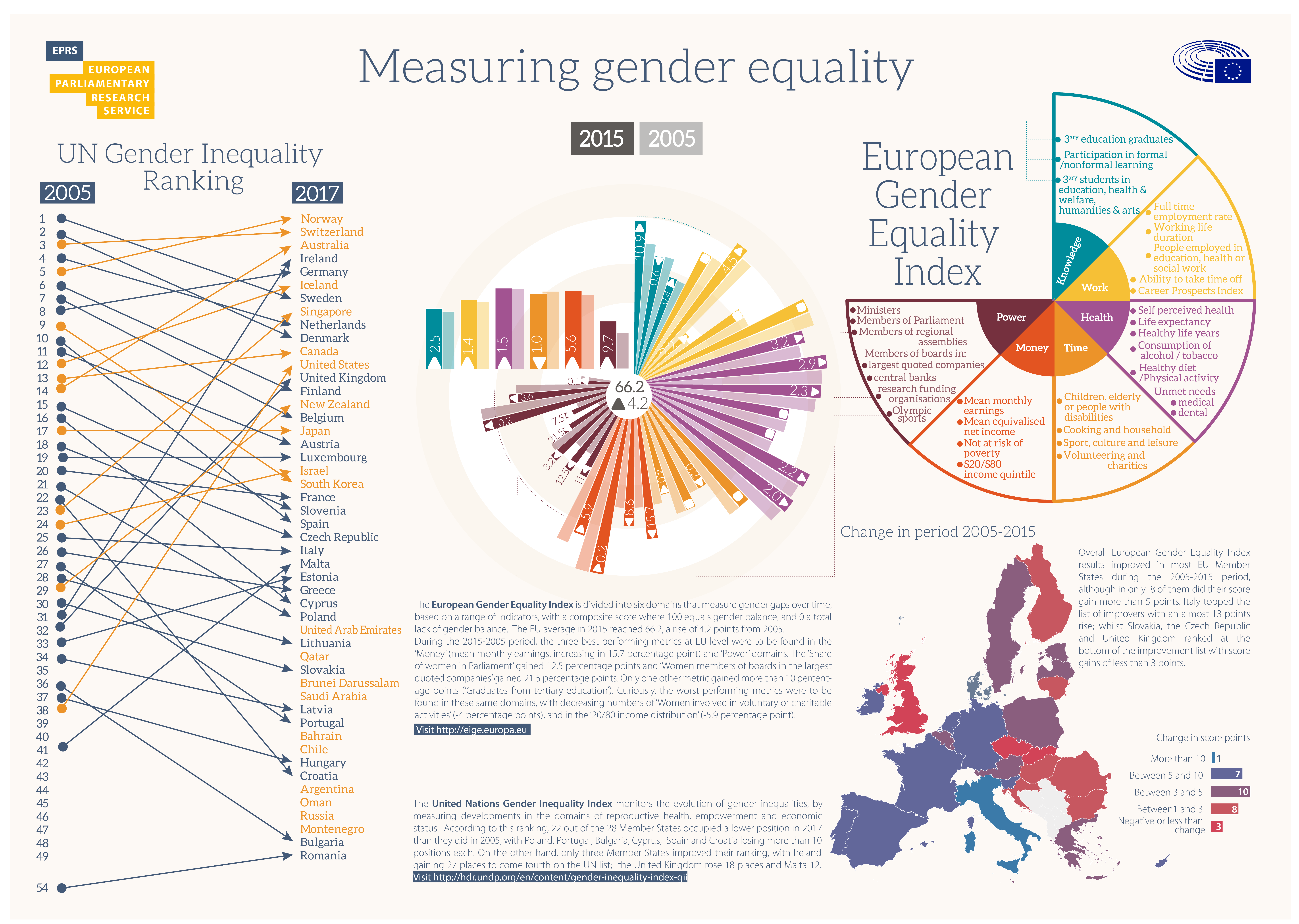Written by Rosamund Shreeves,
Graphics by Eulalia Claros.
During the events held at the European Parliament this week to mark International Women’s Day on 8 March, a number of speakers referred to the slow progress made towards gender equality in the EU over the past decade. How do we know how much progress has been achieved?
There are now a number of global instruments for measuring gender equality, developed by international organisations including the World Bank, the United Nations, and the Organisation for Economic Co-operation and Development (OECD) and other bodies, such as the World Economic Forum (WEF). The World Economic Forum’s 2018 Global gender gap report found that improvements in wage equality and the number of women in professional positions have been offset by the stagnating share of women in the workplace and women’s declining representation in politics, coupled with greater inequality in access to health and education, leaving the global gender gap only slightly reduced. It concludes that, at the current rate of change, the global gender gap will take 108 years to close, whilst reaching economic gender parity remains 202 years away.
The European Union also has its own gender equality index, developed by its European Institute for Gender Equality (EIGE) and tailored to the EU policy context. The index uses comparable data from Eurostat to measure achievements and gender gaps over time in six core domains (work, money, knowledge, time, power and health), assigning scores for Member States between 1 for total inequality and 100 for full equality. It also measures two additional domains, violence against women and intersecting inequalities, not included in the overall score. The latest report, published in 2017, compared trends between 2005 and 2015, concluding that advances have been made, but at a snail’s pace. It concludes that, overall, the EU and its Member States are still only halfway towards achieving full equality between women and men and that there are significant divergences between countries. Whilst most score relatively well on health and education, this cannot be said of employment, access to economic and financial resources or leadership.
You can view details for individual countries and compare countries on the interactive website. EIGE will issue the next update in October 2019.
In the meantime, the European Commission has just issued its 2019 annual report on equality between women and men in the EU, taking stock of progress made towards the goals set out in its strategic engagement for gender equality for 2016-2019.









[…] Source Article from https://epthinktank.eu/2019/03/08/measuring-gender-equality/ […]
[…] en compte des initiatives de premier plan telles que « Unstereotype Alliance et « Gender Equality Measure » (NDLR : des initiatives des Nations Unies et du Parlement européen) qui cherchent à […]